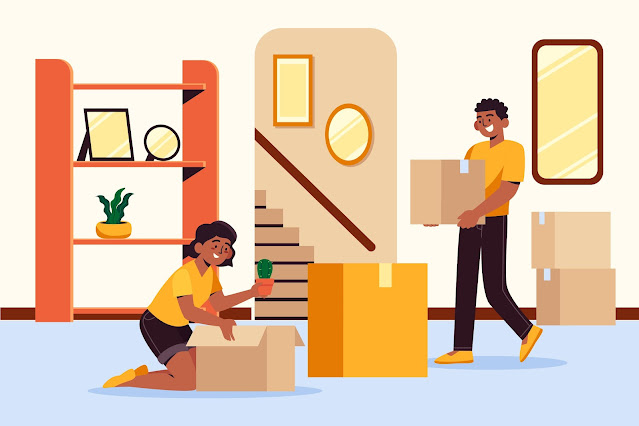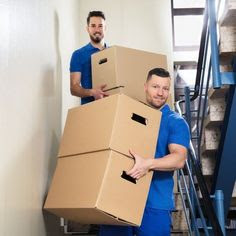Essential Packing Tips for Your Interstate Move
An interstate move isn’t just about boxing things up: It is all about fine planning, packing with strategy, and minimising disruptions to one’s life. The longer a movement is, time exposure increases-and so does the handling. Without the correct packing, a move turns into chaos; good packing means good moving. And if all goes well, the interstate removalists Melbourne will make life easier.
Here is how to pack like a pro when doing it either by yourself or with the help of others:
1. Know What To Focus On
Before getting to the boxes and tape, you need to stop and think about what is truly worth keeping. Consider its size, value, sentiment, and how much it would cost to replace back. Do your best not to waste time and money packing things you do not need anymore or could simply buy on the other side.
Things to consider as high priority are:
Personal identification documents.
Medicines and medical records.
Essential electronics.
Basic clothes and some shoes.
If at all possible, pack these things separately and carry them with you or at least near.
2. Pack By Zones
Try packing by zone, concentrating on one particular area of a room at a time, rather than by category (clothes, books, etc.). This could reduce the likelihood of misplacing items or mixing unrelated objects by making packing more efficient and confined to a single area of the house.
Clearly label each box with:
Room Name.
Specific Area (e.g., "Living Room-Coffee Table Drawer").
Priority Level (e.g., the one that needed to be "Open First").
This method, thus, eases both loading and unpacking.
3. Double Protect Fragile and High-value Items
During interstate travel, items are prone to long hours of vibration, temperature changes, and shifting weight. Fragile items take the hit. Layer protection:
Each item should be wrapped with bubble wrap or heavy-gauge paper.
Line boxes with padding (towels, foam, etc.).
Avoid heavy items on top.
For extremely precious items, it is best to inquire from house removalists Melbourne regarding special crates or reinforced packaging.
4. Don’t Overfill Boxes
It is tempting to see if all items can fit into as few boxes as possible. However, overfilled boxes are more cumbersome to carry and are sometimes at the risk of tearing or crushing.
Keep each box under 20kg (45 lbs), equally sharing the weight between lighter and heavier contents.
Nonetheless, the tip is to keep books in smaller boxes and bedding or clothes in bigger ones. This makes boxes manageable and prevents injuries during loading.
5. Keep Important Things Within Reach
A personal bag should be set aside with:
Chargers.
Toiletries.
Snacks.
A change of clothes.
Important documents.
You want to be able to access these as soon as you arrive. In an interstate move, the rest of your belongings could be trailing behind.
6. Take Pictures Before You Unplug Or Unscrew
In-going pictures need to be taken when disassembling furniture, tech setups, or items hanging on walls. During reassembly, especially after days of travelling, these images make for a reference later.
Also, consider placing every screw, bolt, and piece of assembly in zip bags and labeling them. It is then advised to tape those bags to the item that they belong to.
7. Create a Digital Inventory.
While packing, keep track of your items in a spreadsheet or use a mobile app. Number each box and give a description of its contents. If, by any chance, some items get lost or delayed in transportation, you'll have an organised database to help track them.
Bonus: It comes in handy in the unpacking process if you hire a man with a van Melbourne for a few other local moves because you will know exactly where everything is stored.
8. Leave Out Hazardous Materials
Some do not know that items that are dangerous without even realisation should not be assigned to handled, especially in long-distance moves. These include:
Flammable liquids.
Paints.
Fire extinguishers.
Propane tanks.
Aerosols.
They need to be disposed of safely ahead of time, or you should look into other alternatives.
9. Provide Information to Movers
If you are hiring professionals, keep them up-to-date. Inform them about:
The boxes that the movers should treat as fragile.
Items that should be loaded last.
Anything needing climate control.
Where exactly does each item belong in the new house.
Clear communication is especially important when working with office removalists Melbourne so that they can understand the specifics of the business, equipment sensitivity, and setup timelines.
10. Confirm When And Where To Unload
Check the new place before the moving truck even arrives at your place:
Unloading access should be there (especially at apartment complexes or streets that are too narrow).
You shall know and account for the exact time and date of delivery.
There should be a pre-preparation as plan B if by any chance it does not go the way.
Knowing these things ahead of time will help you keep surprises from raising their ugly heads on move day.
Final Thoughts
Packing and moving from one state to another is a test of organisation and patience. But with the right mentality and plan in place, plus proper packing materials, you can keep your belongings safe and stress-free while carrying through the journey. Whether it's a home or a business you're moving, take your time to pack properly so the beginning is the best.



Comments
Post a Comment